Salt has long been used for flavoring and preserving food. It has also been used in tanning, dyeing and bleaching, and the production of pottery, soap, and chlorine. Salt is anti-bactericide and naturally hydrophilic, meaning it can help regulate humidity in the room. Today, it is widely used in the chemical industry. Yet, with more than 14,000 known applications for salt, its materiality is often overlooked. These designers and researchers showcase how this mundane mineral can be used as a precious and versatile resource for design and architecture.
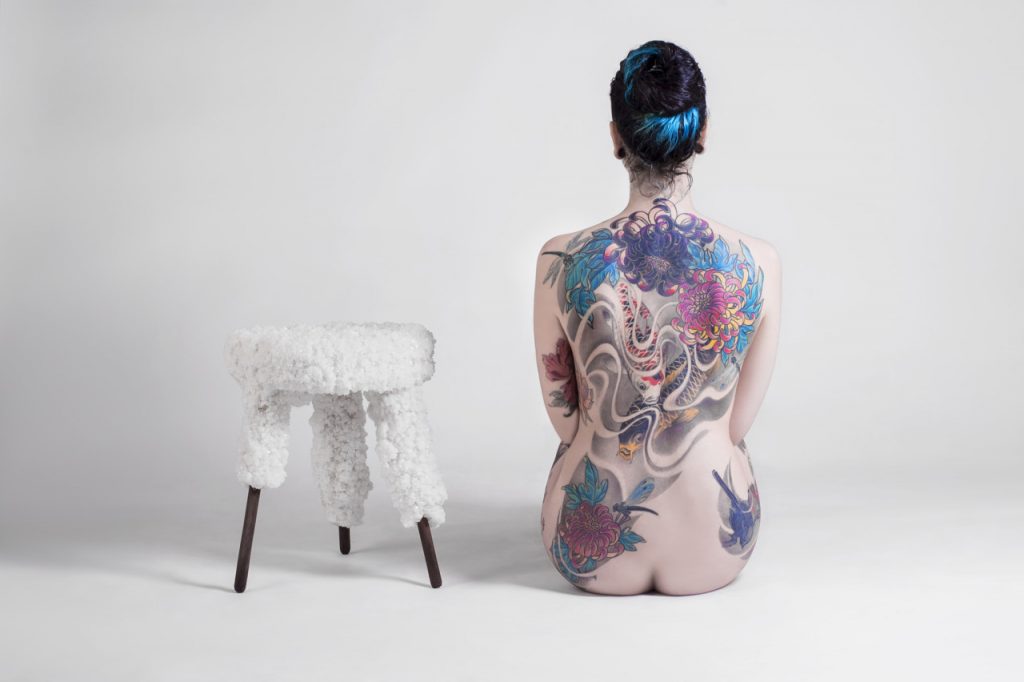
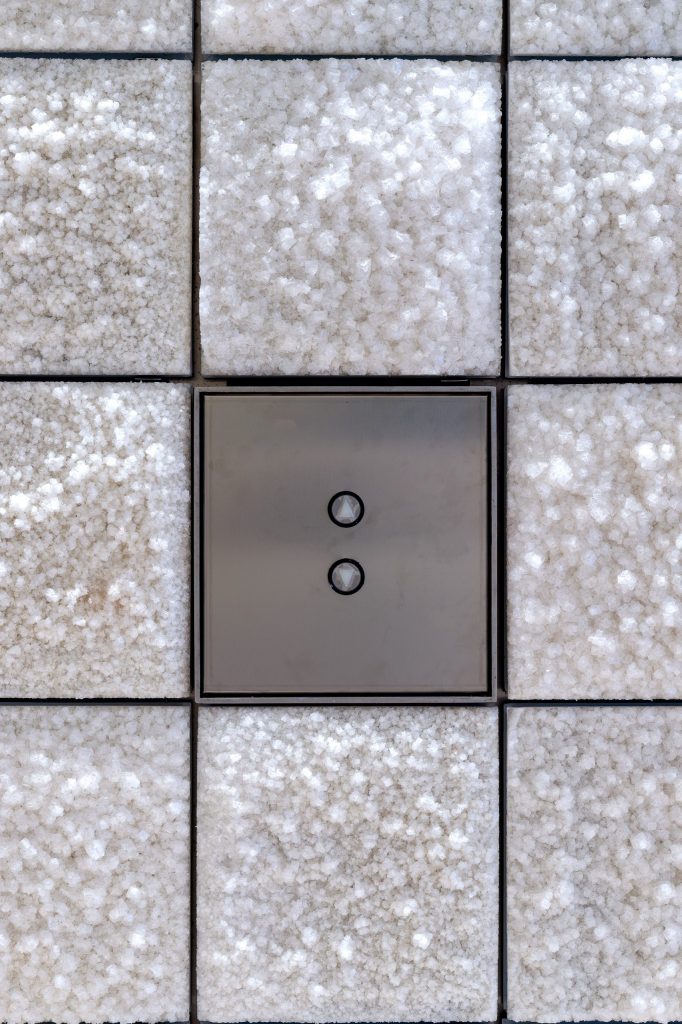
Salt panels by Atelier Luma in Luma Foundation in Arles
Salt panels are among locally produced natural materials developed by Atelier Luma, a “circular design lab”, for the interior of Frank Gehry’s tower for Luma Foundation in Arles, south of France.
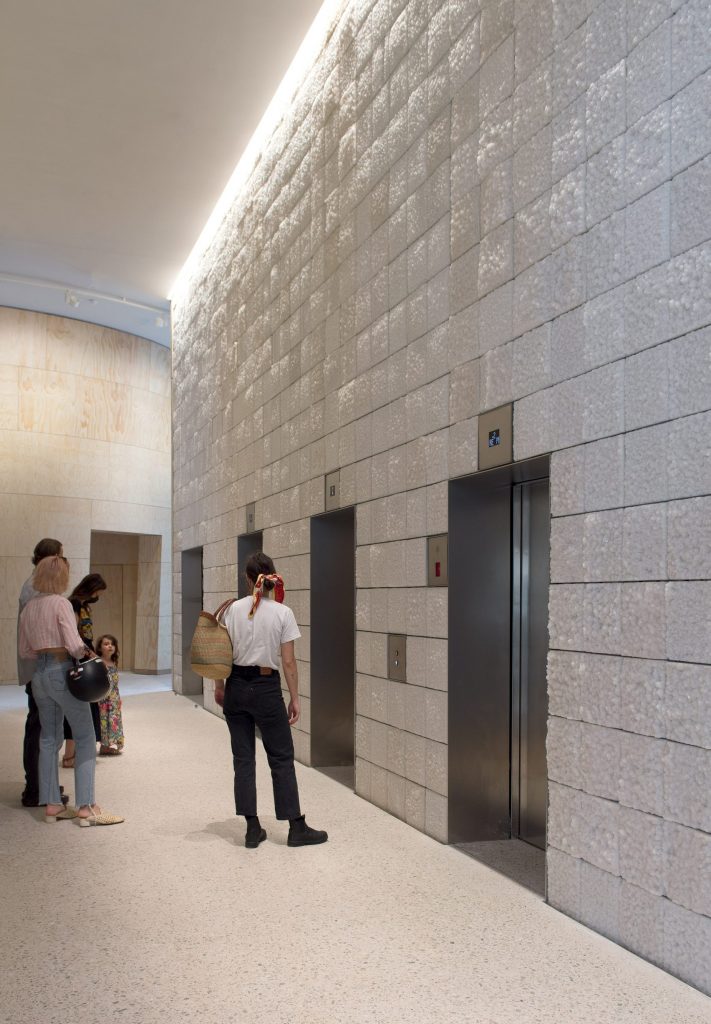
Salt panels by Atelier Luma in Luma Foundation in Arles
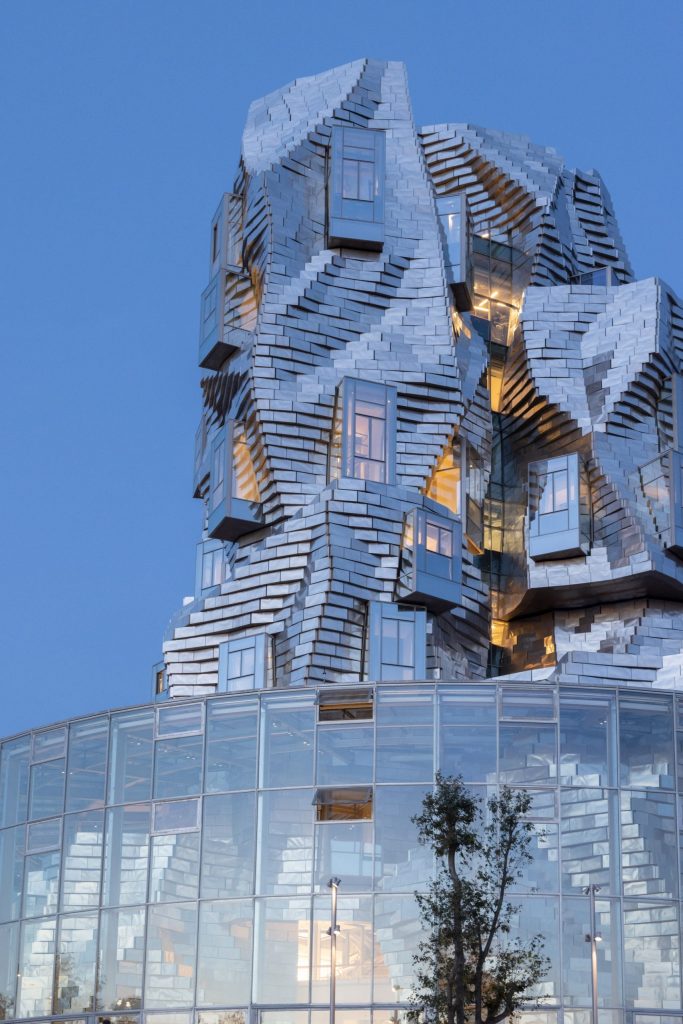
Exterior of Luma Foundation in Arles by Frank Gehry
The salt panels have been used in the project alongside bathroom finishes produced from algae and acoustic panels crafted from sunflower stems, all of which have been devised by Atelier Luma in order to lower the carbon footprint of the building, which is made of concrete and steel and clad in stainless steel panels. They replaced off-the-shelf interior finishing materials specified by Gehry’s team.
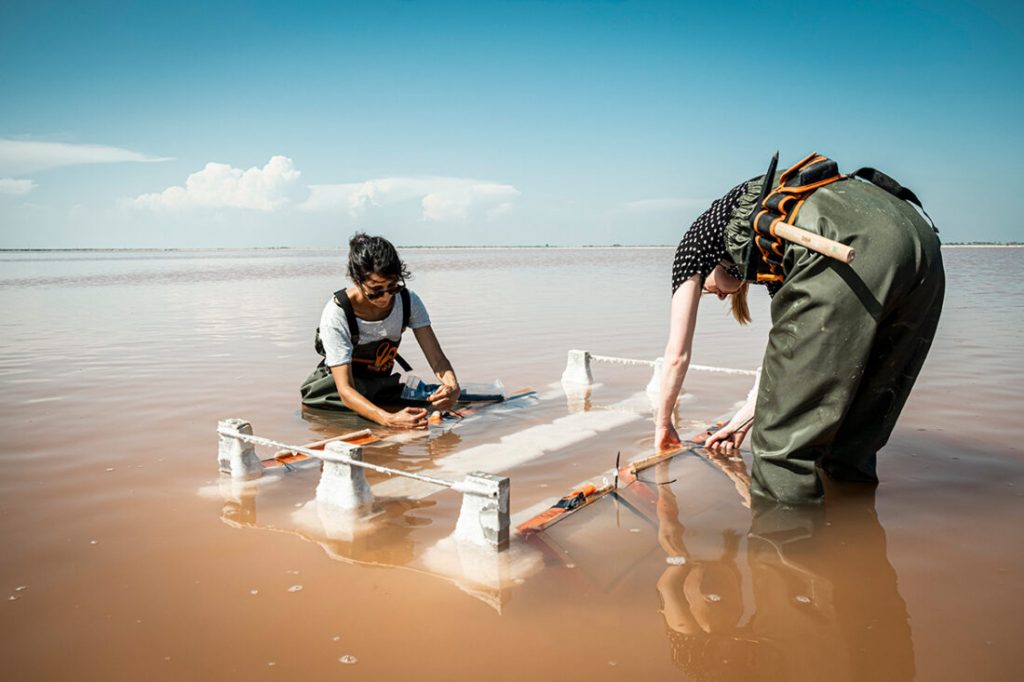
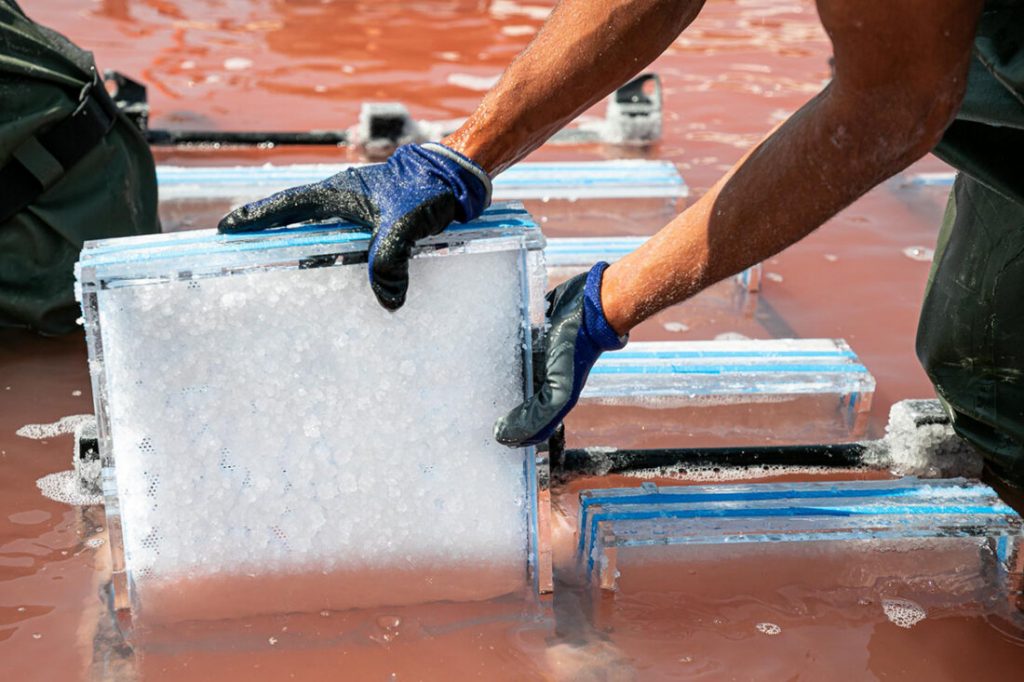
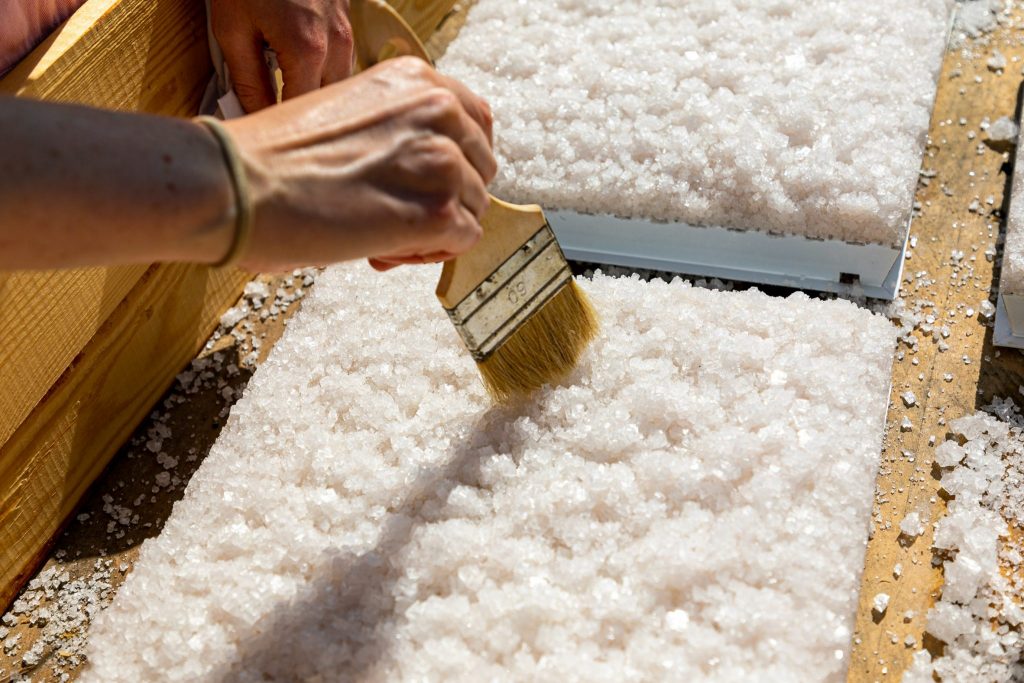
Salt panels by Atelier Luma in Luma Foundation in Arles
To produce the thousands of the salt panels used to clad the building’s lift lobbies, designers Henna Burney and Karlijn Sibbel developed a way of growing salt crystals on metal mesh placed underwater in the extensive ancient salt flats in the nearby Camargue nature reserve.The salins have been used by the locals to evaporate the mineral since antiquity. The process only requires sun and wind, and no added energy. The material really grows itself by crystallisation over two weeks.
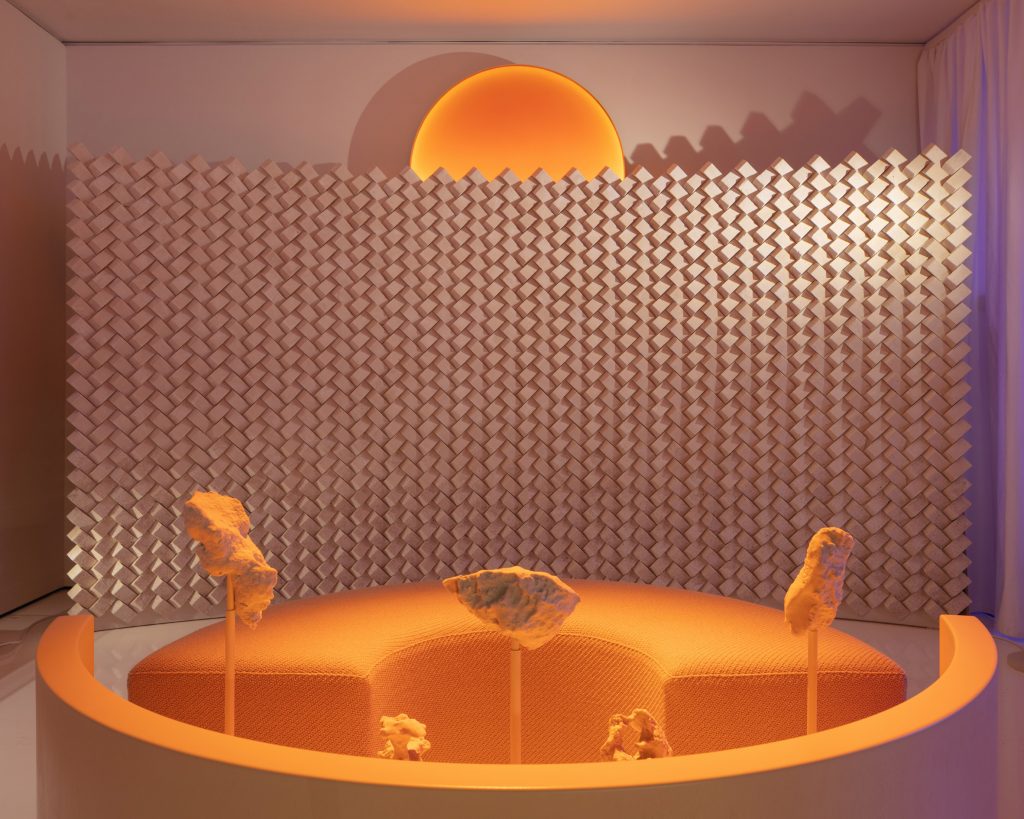
Salt Imaginaries installation by Mále Uribe Forés
Chilean architect Mále Uribe Forés has used the same principle to create the “living” tiles for her Salt Imaginaries installation. Made from a mixture of plaster and salt taken from the Atacama desert in Chile, the geometric tiles forming a reactive wall will react to the humidity and temperature of the room, gradually crystallising and growing over the course of time.
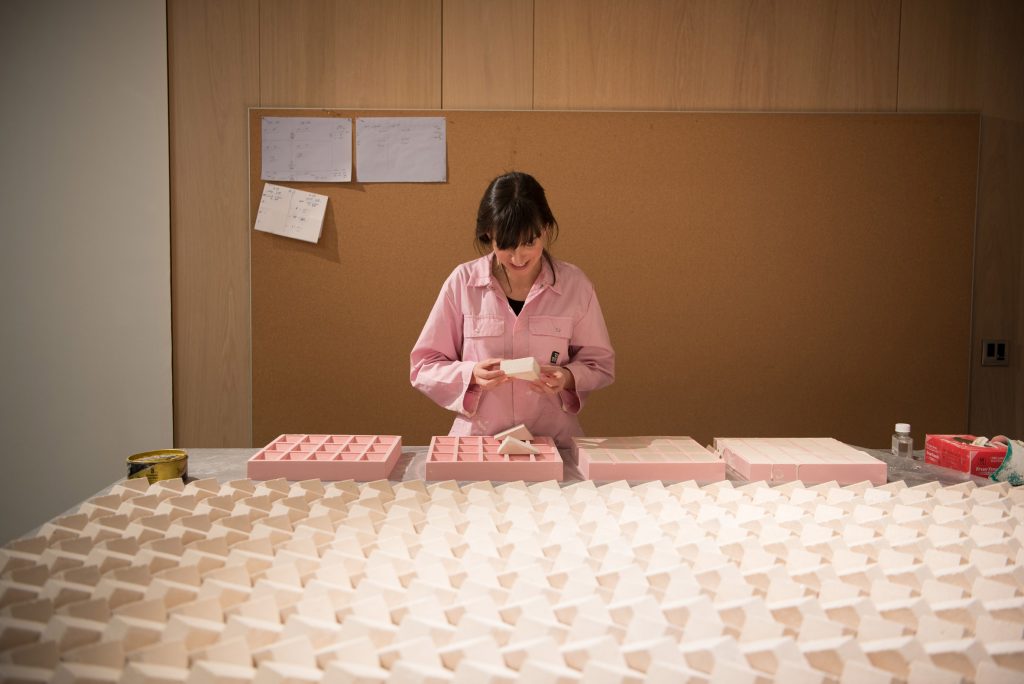
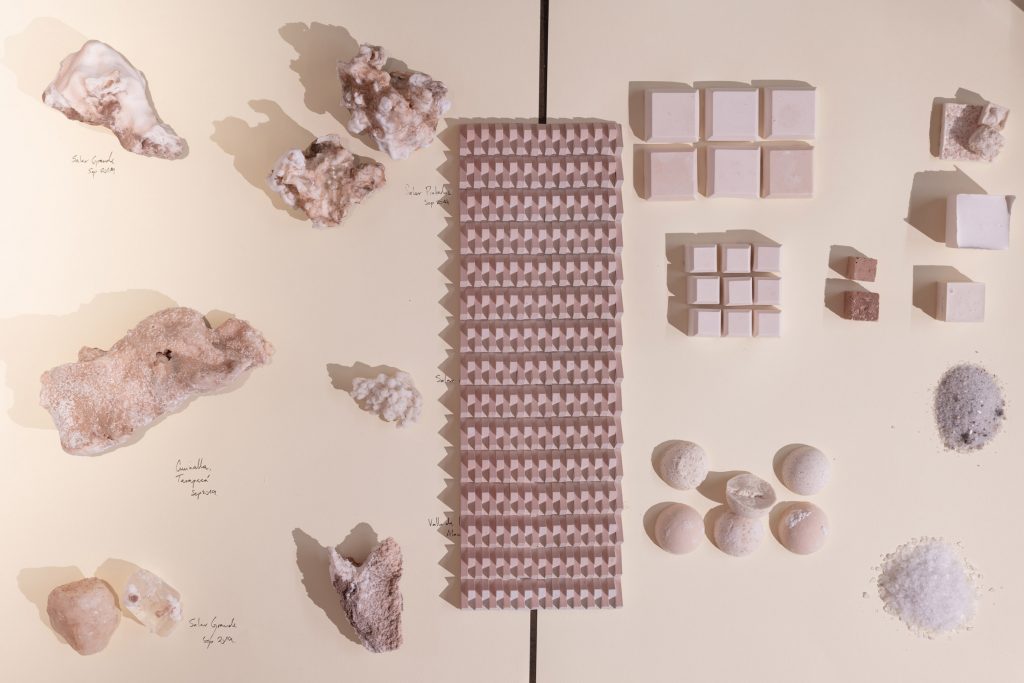
Salt Imaginaries installation by Mále Uribe Forés
After visiting the Atacama desert, the designer was fascinated by the unusual salt formations that resembles digitally rendered sculptures, which brought her to learning everything she could about the mineral. She experimented with different salt residues before developing a stable composition with the help of chemists from Chile and the UK. After that, she used this make matrix moulds of the final desired shape and used these to cast the tiles in silicone moulds.
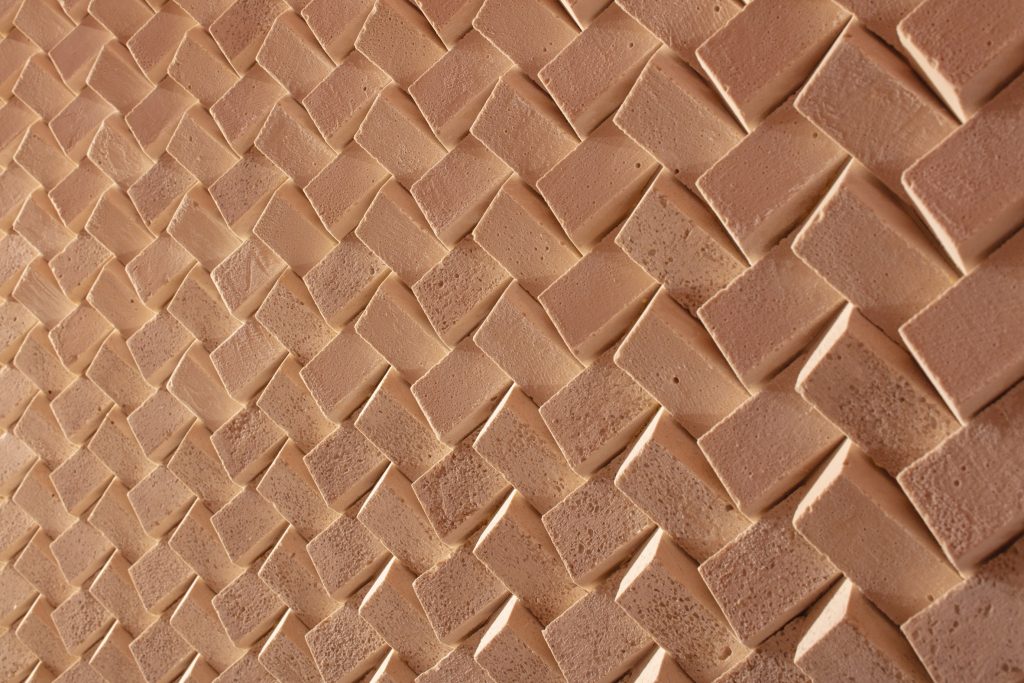
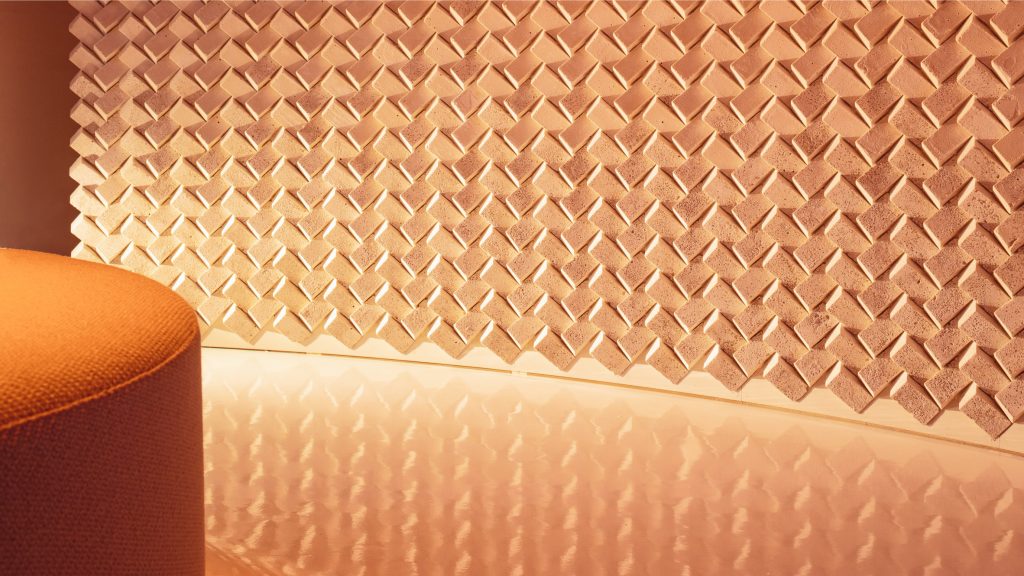
Salt Imaginaries installation by Mále Uribe Forés
The resulting tiles boasting two different finishes were assembled on-site to create the final three-metre structure. The repetitive pattern of the wall is derived from the architectural remains of old mining settlements that Forés came across on her research trip to the desert in the region of Tarapaca. The structures she discovered were made with saline mineral rocks using a zig-zag pilling technique to make self-supporting walls that were incredibly well preserved.
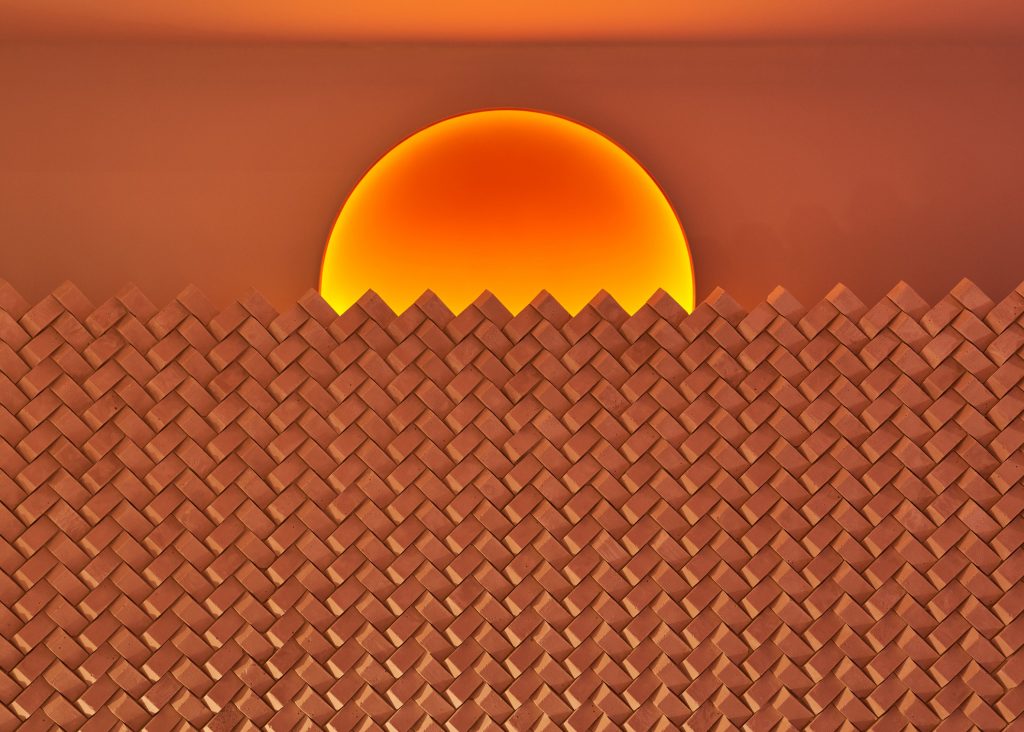
Salt Imaginaries installation by Mále Uribe Forés
The Salt Imaginaries installation is accompanied by an immersive soundscape of crackling salt and scenographic elements, such as a glowing sun emulating the warm landscape of the desert, where the sun is the only reference of movement and orientation.
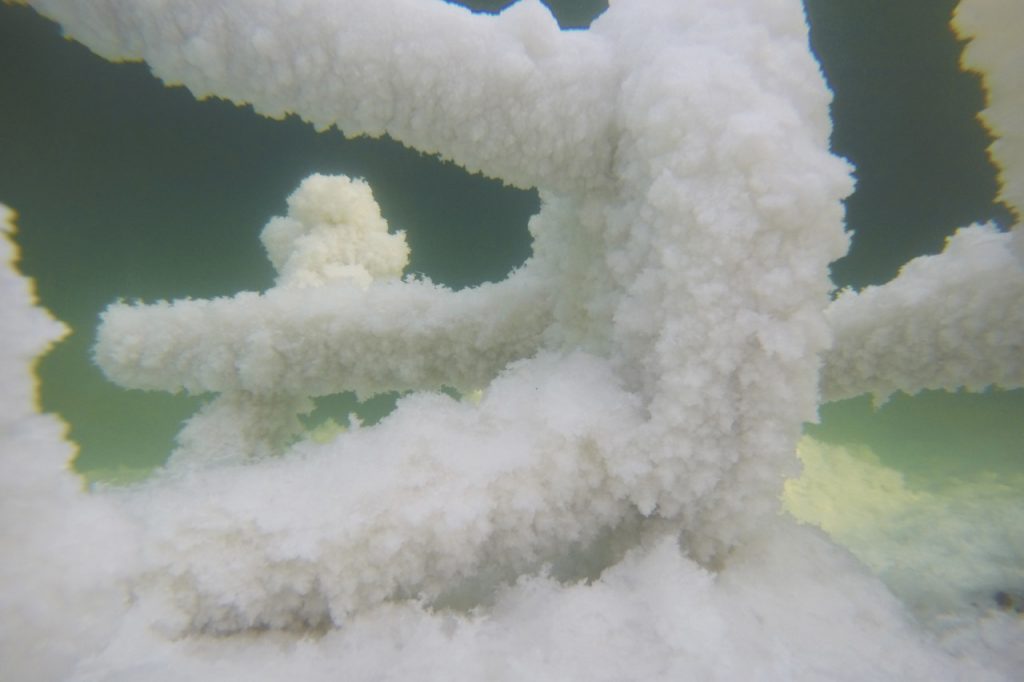
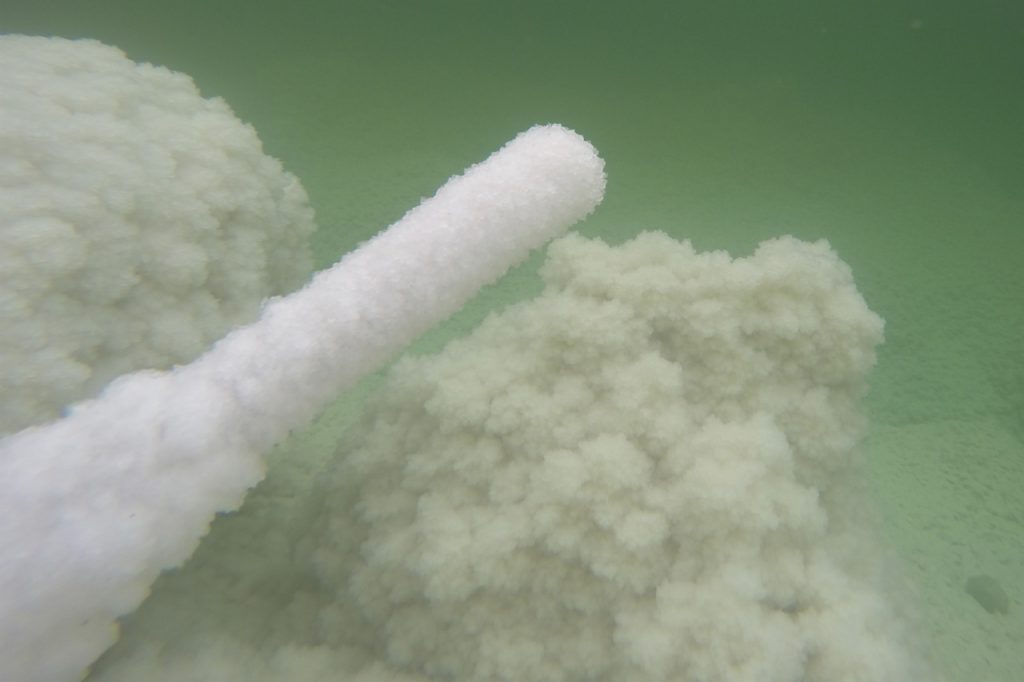
Salts by Erez Nevi Pana (also header image)
Israeli designer Erez Nevi Pana has been working with salt for the past eight years. 20 millions tons of salt accumulates every year in the evaporation pond of the Dead Sea resulting from the water body’s over-industrialization. This, in its turn, causes flooding, unstable water levels, and an overall disruption of natural equilibrium. To address this environmental challenge, the designer began envisioning solutions to make this byproduct applicable in design and architecture.
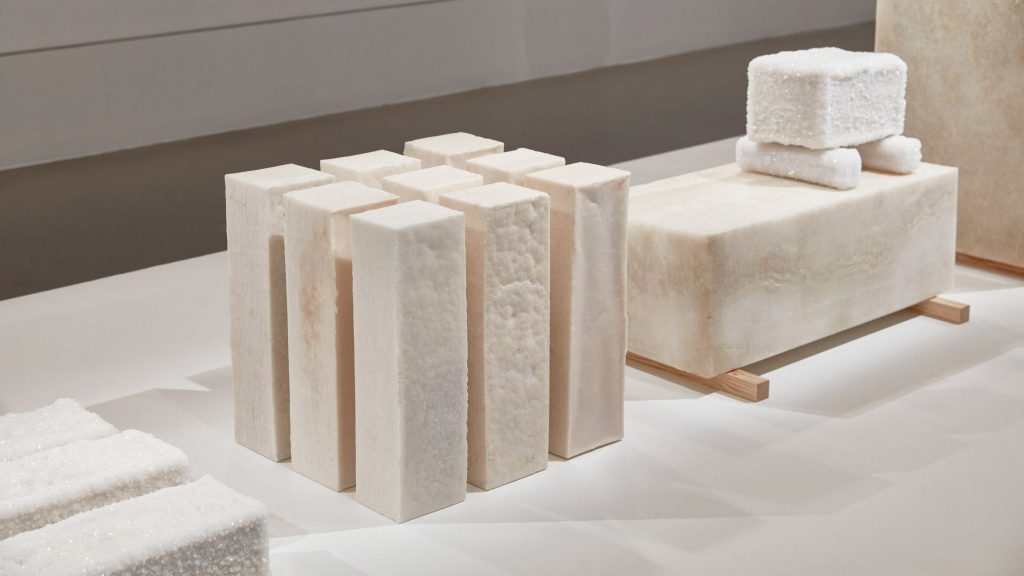
Crystalline by Erez Nevi Pana
Nevis Pana’s Crystalline collection showcases how salt can be used as a sustainable construction material for buildings. The collection consists of four sculptural elements – a ladder, boulder, steps and a walkway – all of which are made from solid salt, apart from the ladder, which has an aluminium base.
To create the final shapes of the salt blocks, the designer treated the material in different ways – while some parts were kept in an unfinished state, others were CNC-milled. All this resulted in pieces that look stable and firm, yet poetic and expressive.
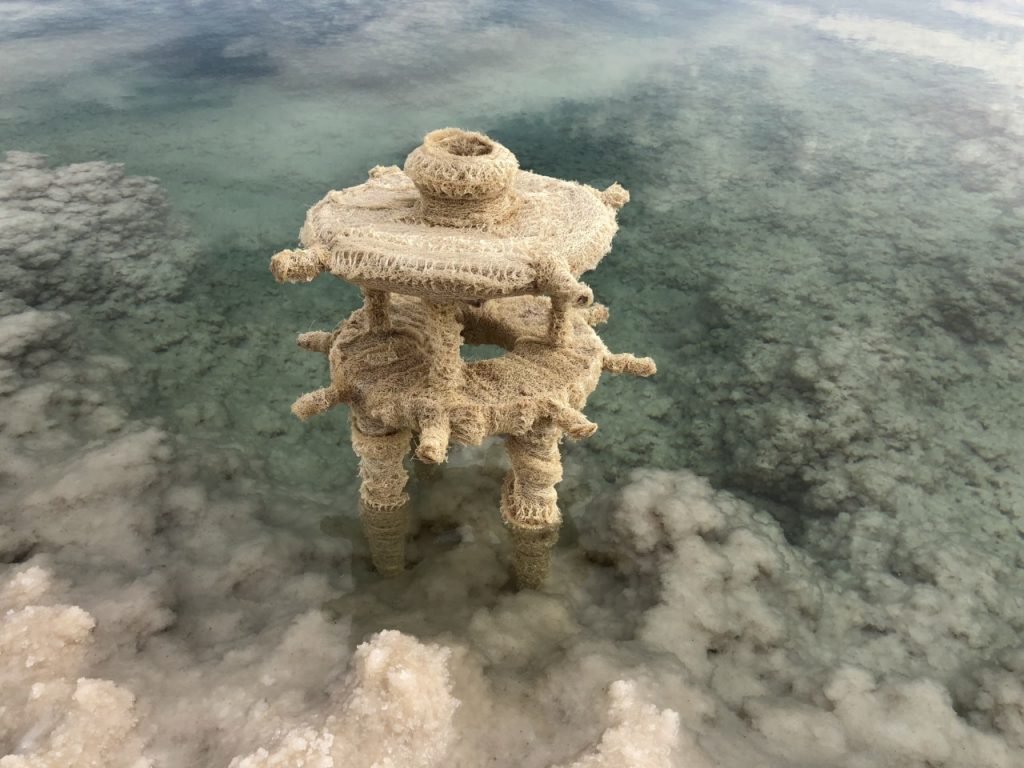
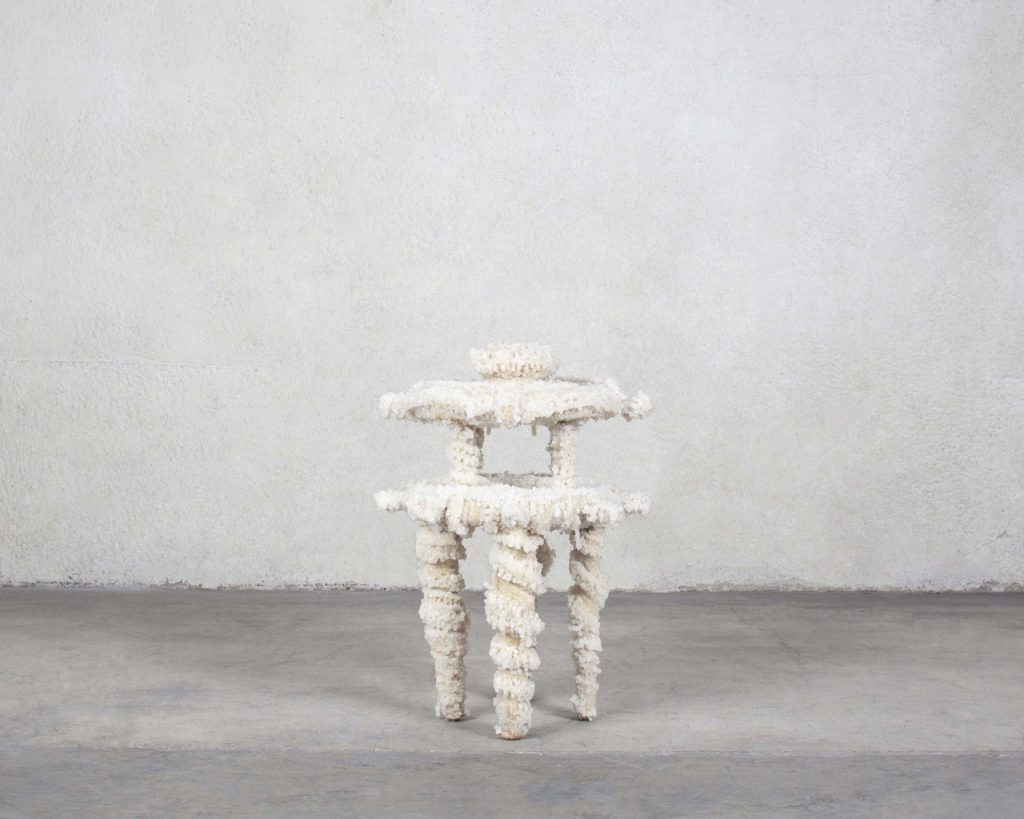
Bleached by Erez Nevi Pana
Other product of the designer’s investigation of the material applications of salts is his projects that feature vegan, animal-free furniture and sculptures. For Bleached, Nevi Pana submerges wooden structures encased in loofah into the Dead Sea—leaving them to crystallize into otherworldly, architectural forms.
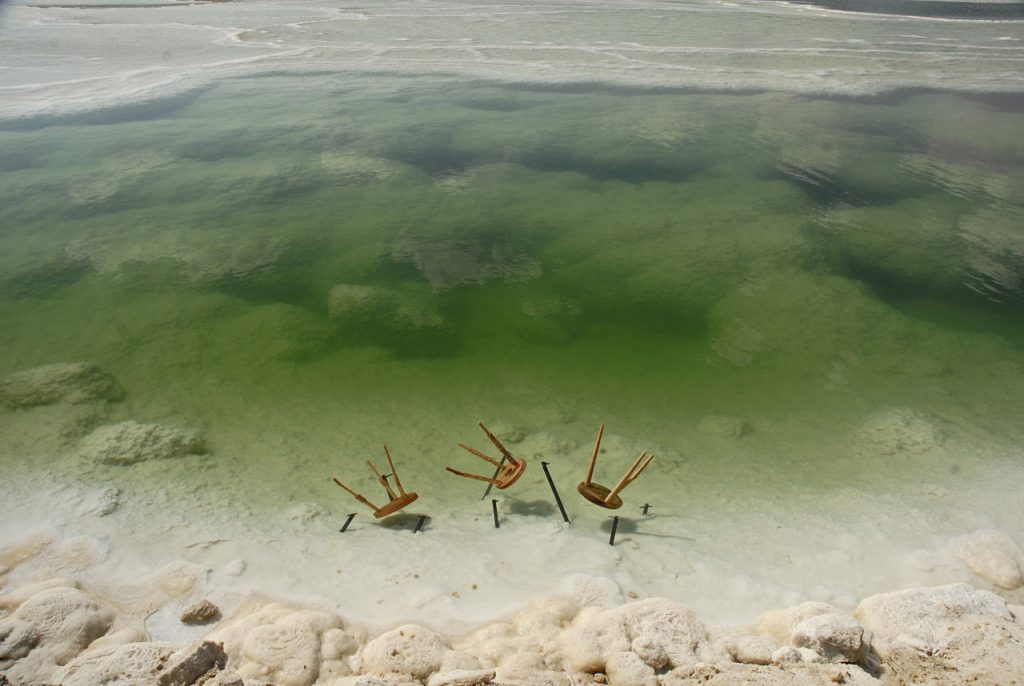
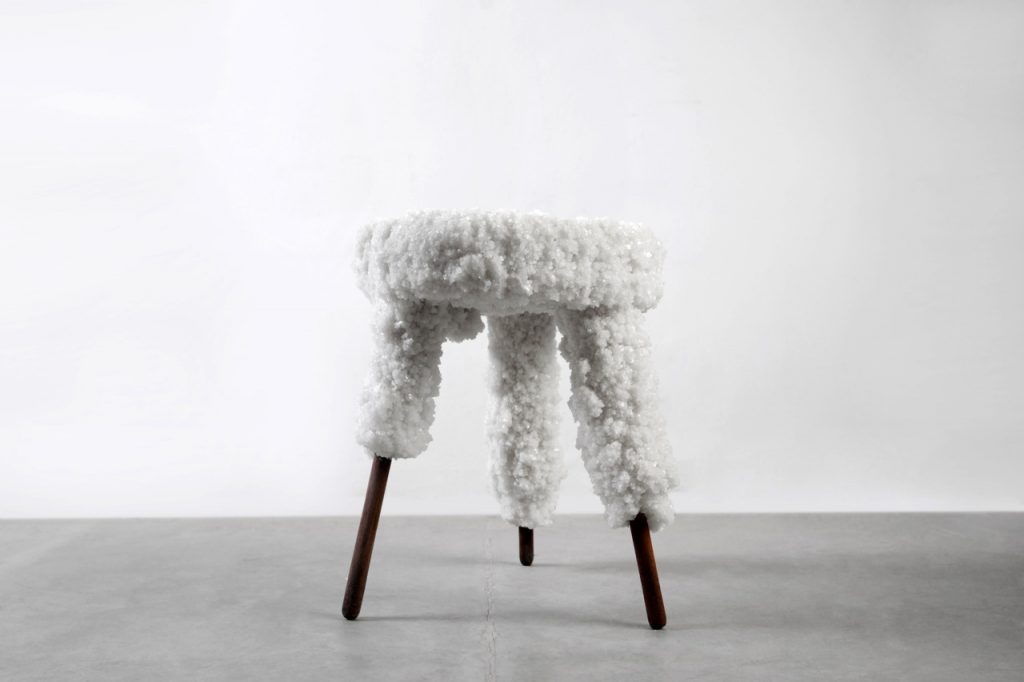
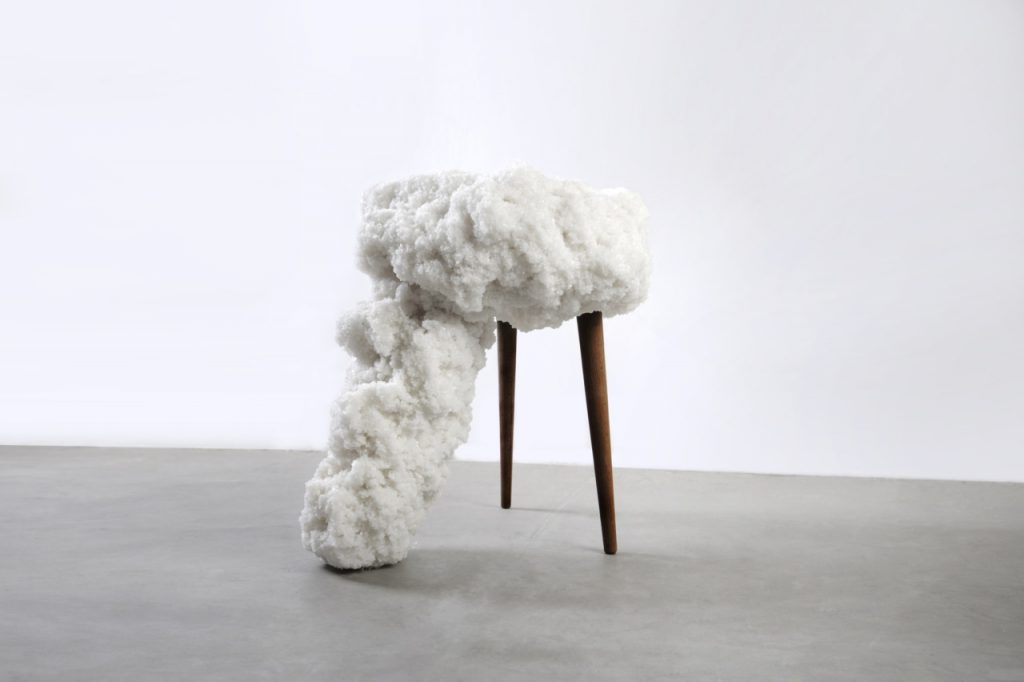
Salts by Erez Nevi Pana
For Salts, he uses the crystallising process to create a kind of skin that secure together the elements of furniture pieces he creates using scraps of wood discarded from carpenters’ workshops. He pushes the legs inside the body of the stool in a slot-like manner, leaving it to salt to do the rest. Dipped in water from the Dead Sea for several months, the seat was coated with a skin of salt crystals that kept the legs in place.